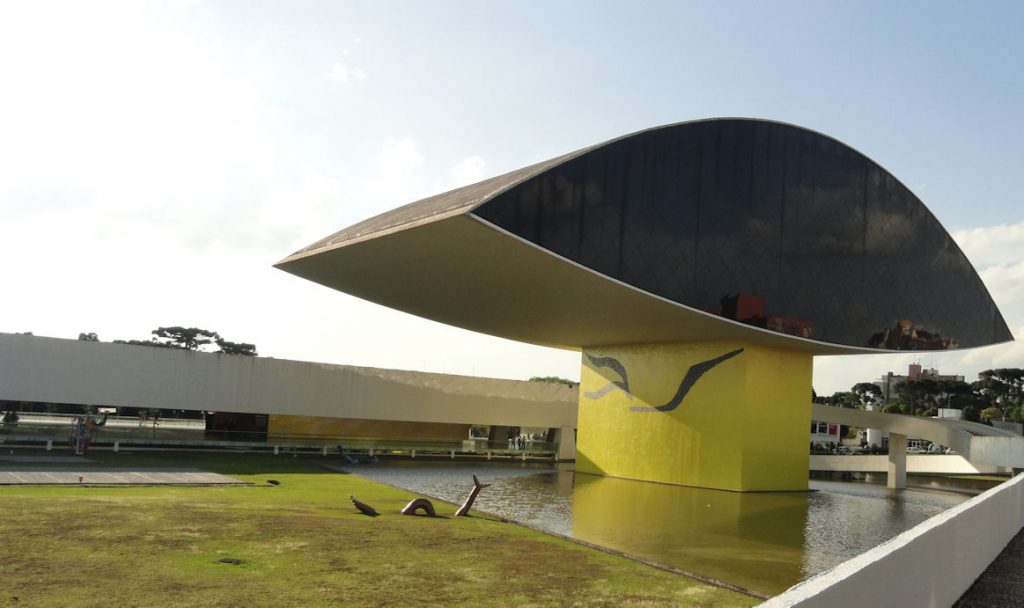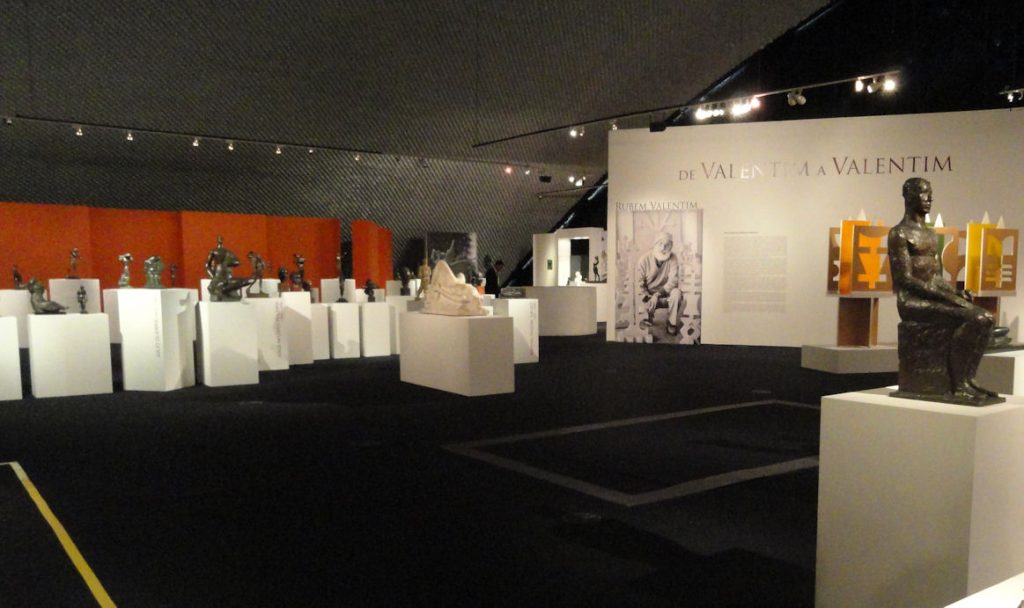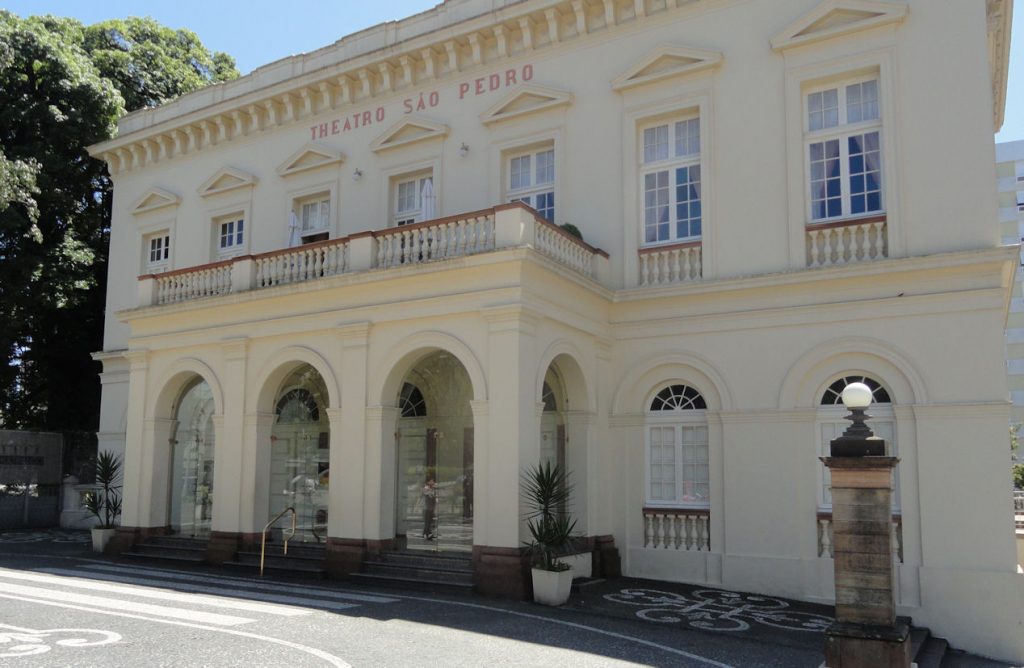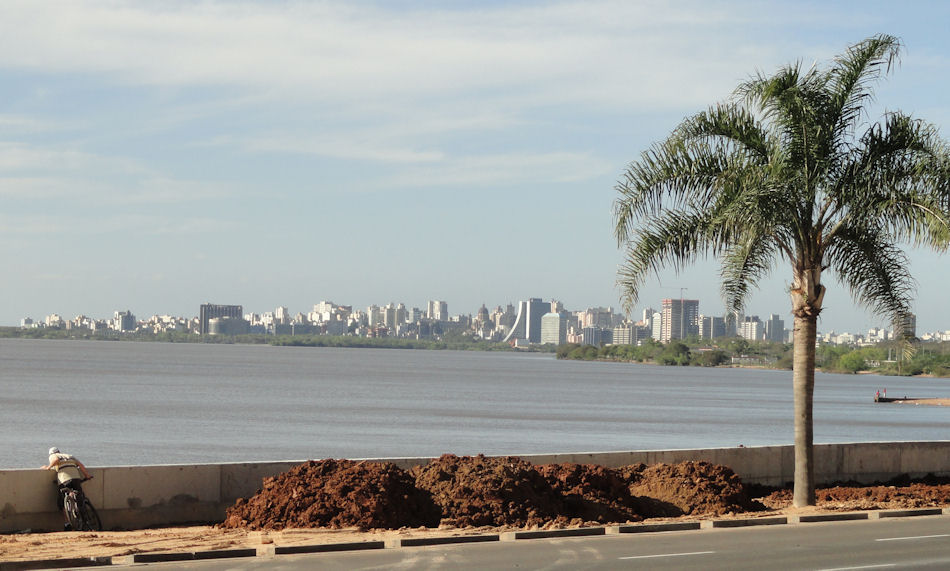
I am not a big admirer of modern art, although I am learning to like it better. We usually appreciate things as we learn more about them and get more accustomed to them. It is like exposing your kids to vegetables. Eventually they get to like them at least some. I also understand that this art is popular among many of our friends and I can see the potential for exchanges and cooperation between our Brazilian friends and American counterparts. In our work, the relationships are what count. Art, music & information are the shared interests that make the human connections work and make our work interesting. That is why we scheduled meetings with leaders at the Oscar Niemeyer Museum in Curitiba and a couple days later at the Fundação Iberé Camargo in Porto Alegre.

The Oscar Niemeyer Museum includes lots of his work as permanent exhibits and the works of other artists rotate through. During my visit, they were showing Polish poster art. The Fundação Iberé Camargo has a similar policy, with one floor devoted to the work of their eponymous artist and the others featuring temporary collections. (FYI – Most people are familiar with Oscar Niemeyer. Iberé Camargo was a Brazilian expressionist from Rio Grande do Sul.) In both cases, the most remarkable part of the installations for me was not the art itself, but rather the cultural communities built around the museums and the buildings that housed them, which were also works of art.

(Among the people I was supposed to meet in Porto Alegre was Eva Sopher, the woman responsible for the Theatro São Pedro. You can see the Theatro just above. Notice that it is spelled in the old fashioned way, with an h. It was from her that I first learned to appreciate the importance of the total community that clusters around any cultural center. I wrote a post about this a couple years ago and if you read this post I suggest you read that one too at this link. I added the picture, BTW, so it is the same in both, but I took it on this most recent trip. Unfortunately, Eva couldn’t make it to our meeting. I wanted to tell her the story. I did talk to her on the phone, but I don’t think I made the point well.)

You can see in the picture of the Oscar Niemeyer Museum why they informally call it “the eye.” Fundação Iberé Camargo also has a great architecture with “floating” corridors (i.e. the hang outside the building) to get from floor to floor. The building is made from white concrete and the “floating” aspect must have been a significant engineering challenge. Nevertheless, the most striking aspect, IMO, is the beautiful location. You can see on the picture the fantastic view of Porto Alegre you get from the Fundação building.
